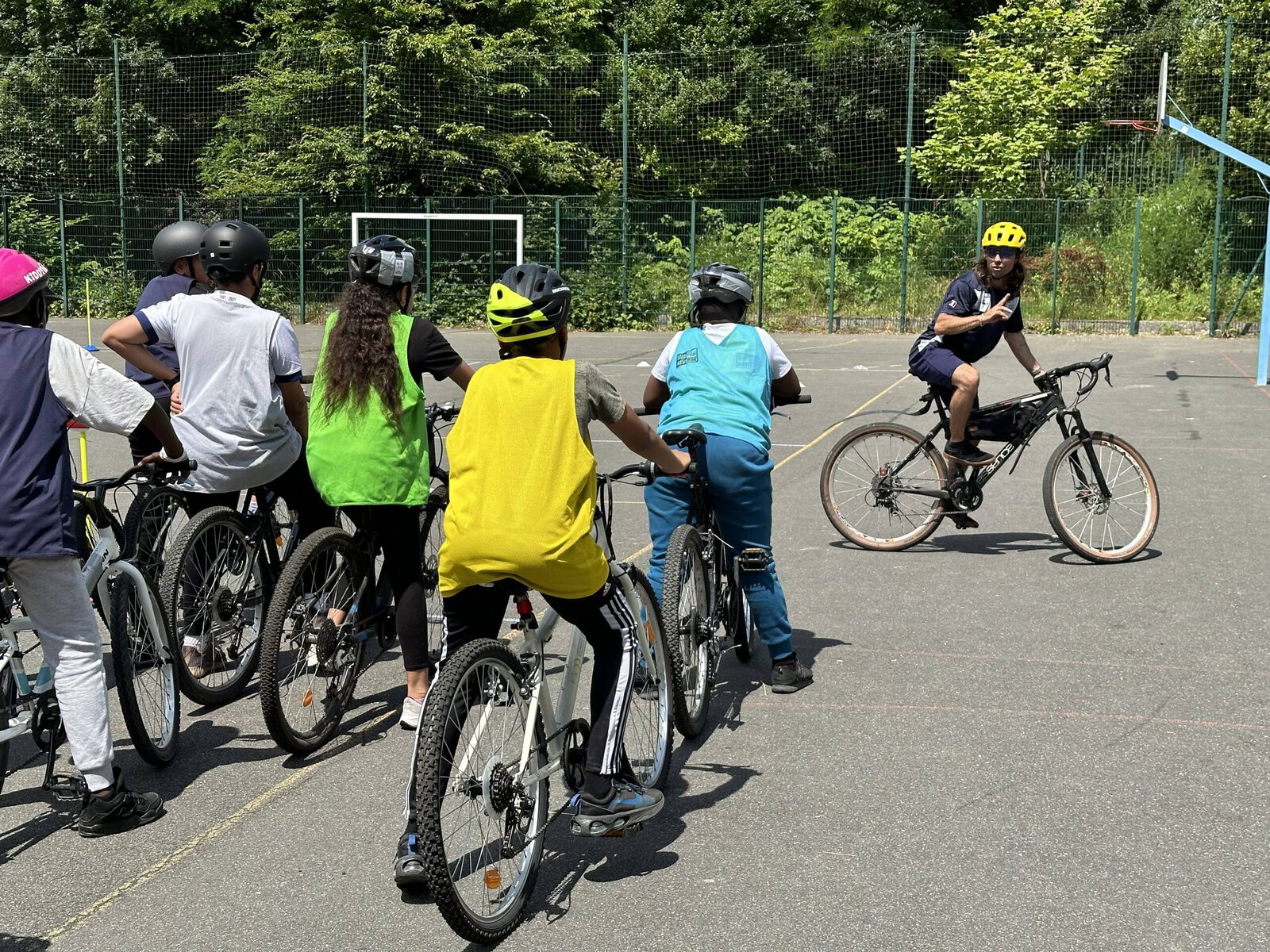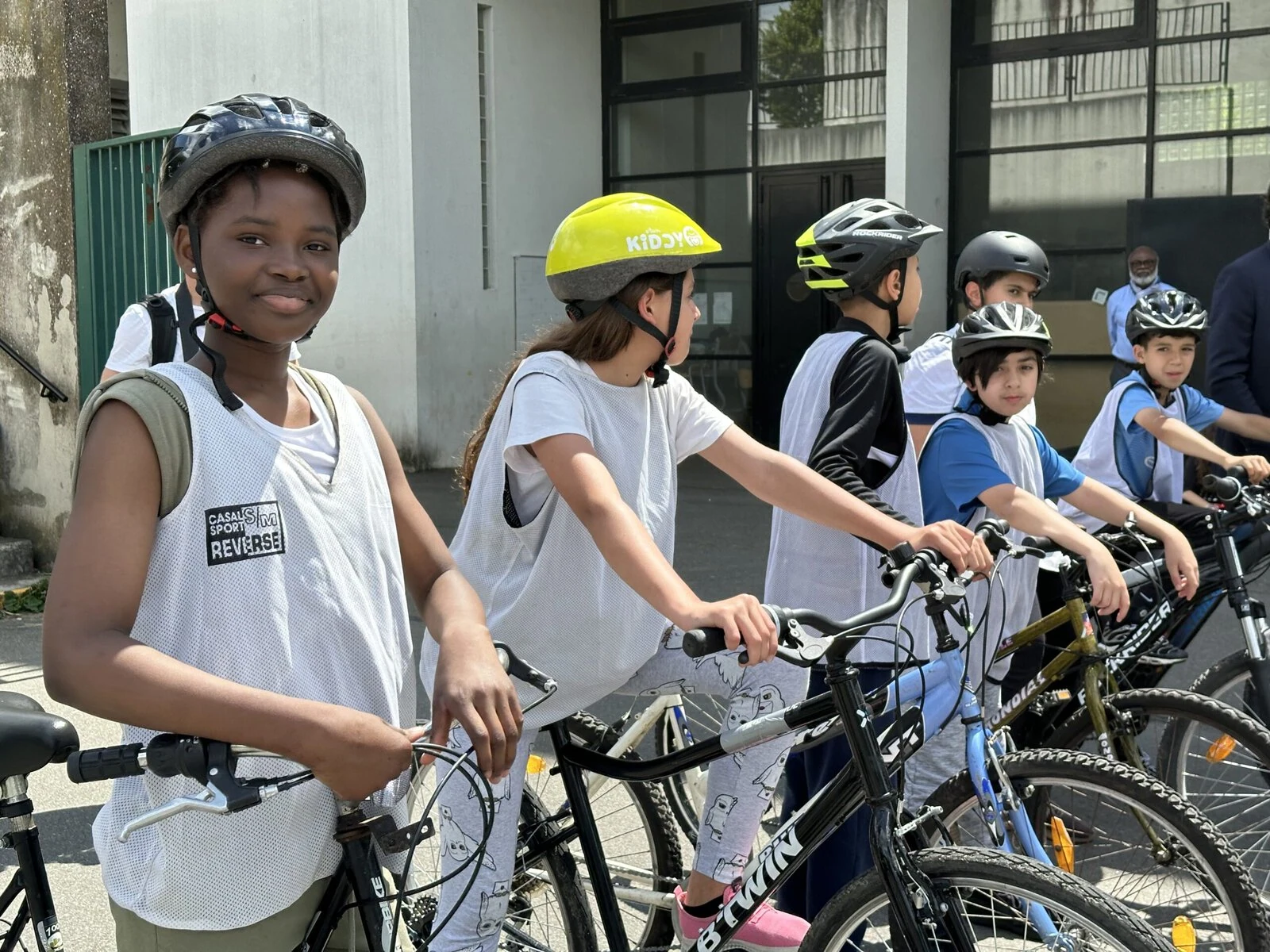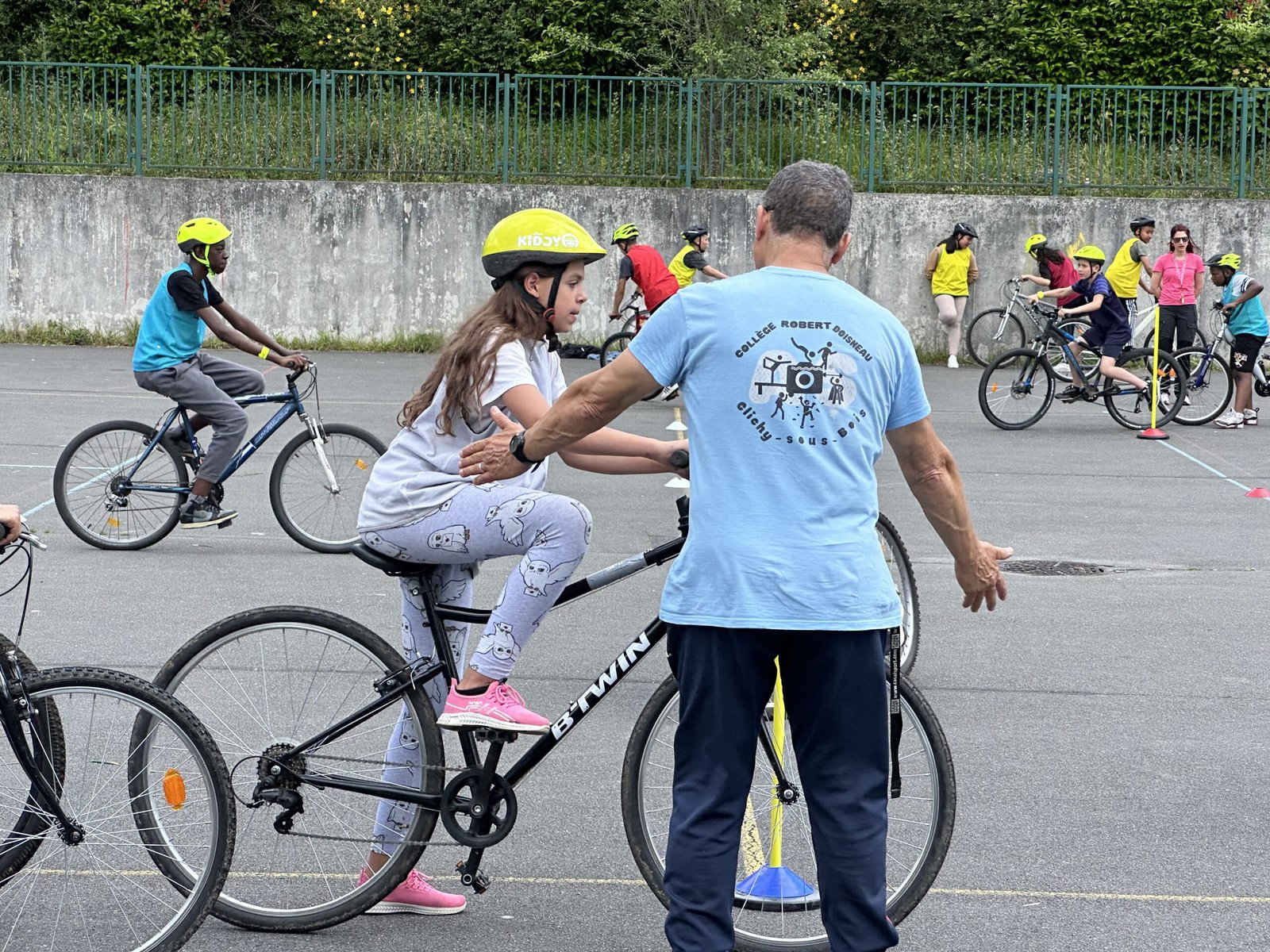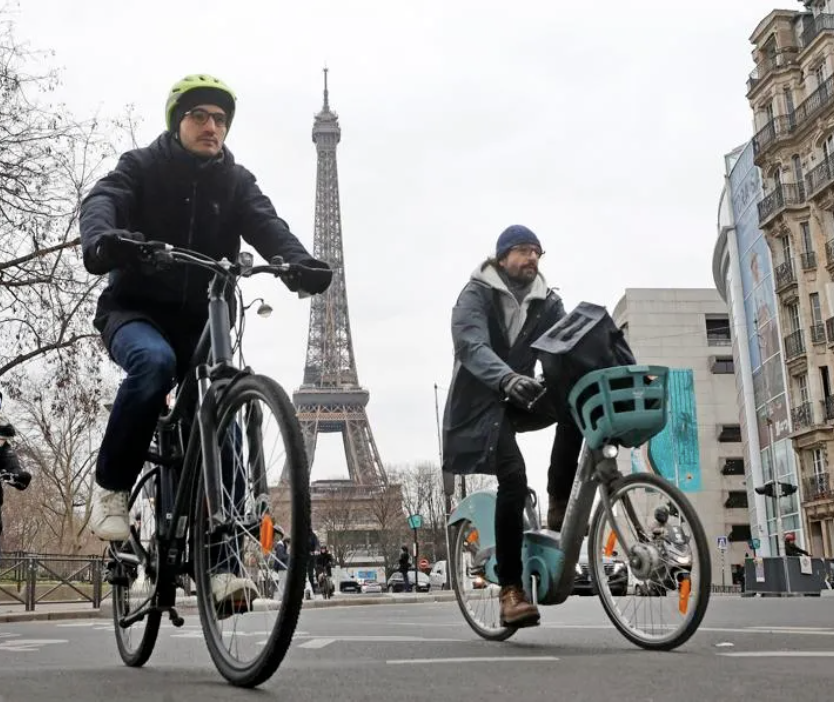On a scorching hot afternoon in northeast Paris, the playground at Robert Doisneau elementary school is in the process of rolling out an entirely new part of the curriculum for its students: learning how to cycle.
Dozens of kids wearing bright yellow and black helmets and fluorescent safety vests are pedaling around on bicycles, circumnavigating a network of colored cones and signs on the concrete that are intended to represent real-life roads and junctions.

“Slowly, slowly, careful,” shouts Cédric le Naour, as one cluster of energetic cyclists nearly speeds straight past a red STOP sign and into a line of other riders. “You have to brake here. They have the priority. Didn’t you look at the sign?”
Le Naour is one of four cycling trainers working in Seine-Saint-Denis, a suburb of the French capital, as part of an ambitious national scheme to teach the next generation of young people in France the tools to safely navigate the streets on two wheels, in turn encouraging them to live healthier, more independent and lower-carbon lives.
Launched in 2019, the 10-week program, known as Savoir Rouler à Vélo (Know How to Bike), aims to gradually scale up its capacity for training school kids aged six to 11 in “cycling readiness” until reaching the goal of about 850,000 pupils per year in 2027.
“Knowing how to ride a bike” — the final step, which involves a group cycle trip on public roads outside of school grounds — results in pupils receiving a certificate. The idea is that many kids will then begin to cycle to school on their own.
“We teach them how to make good decisions on the road, how to be vigilant and attentive,” says Le Naour, who works for the French Federation of Cycling (FFC), a national body, which, along with Paris 2024, the organization running the city’s Olympics, has been running the efforts in Seine-Saint-Denis.
Weighed down by negative news?
Our smart, bright, weekly newsletter is the uplift you’ve been looking for.Over 400 refurbished bikes have been donated to schools in Seine-Saint-Denis, supplying 92 classes, or roughly 2,000 students, thanks to the FFC, which is one of 22 partners across France involved in the bike training.
The program is part of France’s national Plan Vélo, or Bike Plan, through which the government is investing €250 million ($270 million) in cycling every year between 2023 and 2027. While much of this has gone toward infrastructure projects such as building secure bike parking and protected bike lanes — one goal is to have 80,000 kilometers of cycle routes across the country — the plan also includes investment in education programs like SRAV, which received €21 million ($22.6 million) between 2022 and 2024.
Other European cities have also worked on student cycling safety initiatives, such as Barcelona’s bicibús, a project that sees large groups of kids bike to school together.
Research has shown that cycling tends to be more common in wealthier areas — as is the provision of biking services and infrastructure. For example, a report in 2011 by Transport for London found cyclists in the English capital are “typically white, under 40, male, with medium to high household income” — and that socio-economic status is a “major factor” when it comes to exclusion of minorities. According to the UN, there is also a significant underrepresentation of women cyclists worldwide, with three to four times more men cycling on roads, in part due to safety concerns and inadequate infrastructure. Meanwhile, a study of 22 large US cities in 2019 found low-income and minority communities had “significantly lower” access to bike lanes.
France’s cycling proponents therefore see social justice and inclusion as a key benefit of the national bike training program. Roughly 20 percent of the students trained in the program come from the poorer, so-called “priority neighborhoods” in France.
Seine-Saint-Denis, home to the Robert Doisneau school, is the poorest of France’s 96 mainland departments — an official French term for political and geographic regions — yet it is also one of the youngest and most racially diverse in the country.

According to Le Naour, four out of about 25 children in his session of the day had never cycled before.
“This is really important,” says Romains Lachens, director of engagement for Paris 2024, which has helped fund the construction of cycling routes in the city’s suburbs. “We want the legacy of the Olympics in Paris to be sustainable. We want this next generation of children to be cyclists, no matter where they come from.”
In the five years since efforts began, significant progress has been made on the road to two-wheeled equality.
That’s been aided by the relatively low cost of the classes — €1,500 ($1,600) for each 10-hour course for roughly 25 students — and the ease with which they can be fit into the schedule, since the vast majority of children are trained during school time, in pre-existing exercise slots.
However, there is still a long way to go to meet France’s ambitious goals. According to the Greater Paris Bike Collective Observatory, only 15 percent of municipalities in the metropolitan area had implemented the scheme by last year.
“The situation is better than it was before,” says Louis Belenfant, director of the collective. “But we’re far from this program being the level it needs to be. This training is as important as having the actual cycling routes.”
And distribution is very uneven: 38 percent of municipalities in Seine-Saint-Denis were able to benefit from at least one intervention, compared to nine percent of the municipalities in the neighboring Seine-et-Marne department.
“We call on all municipalities to take action to train the cyclists of tomorrow,” adds Belenfant. “The training gives them a taste of cycling, and teaches them to be safe. But it also creates small lobbyists in homes, convincing their parents about cycling.”

Belenfant and the FFC both point to bottlenecks for the scale-up: a dearth of bike trainers currently available and a lack of actual bikes — beyond the obvious need to continue building out bike lanes. Authorities are attempting to tackle the former by training physical education teachers to do the bike trainings themselves, allowing schools to continue the work independently.
But back at the Robert Doisneau school, Le Naour has his hands full teaching the 2024 cohort of riders, which could perhaps even include a future winner of the Tour de France, cycling’s most prestigious competition.
“You can’t brake that suddenly,” he warns one little boy on a blue bike. “You could have caused a pile-up behind you!”
All videos and photos were taken by Peter Yeung.



